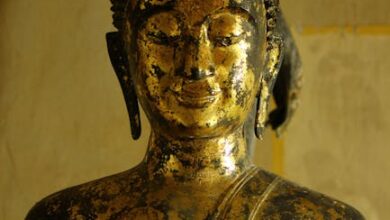The Allure of the Analog: Why Now?

In a world dominated by instant gratification and endless megapixels, there’s a quiet revolution brewing. More and more photographers, from seasoned pros to curious newcomers, are turning their lenses toward the past. They’re embracing analog photography, the art of capturing moments on film. Maybe you’ve seen the aesthetic – the dreamy colors, the rich textures, the unique imperfections that digital cameras often strive to replicate. Or perhaps you’re simply tired of endless scrolling through digital files and crave a more tangible, mindful photographic experience. Whatever your reason, welcome! This guide is for you. We’re going to demystify the beautiful, sometimes bewildering, world of film cameras and help you take your very first analog steps in 2025.
The Allure of the Analog: Why Now?
It might seem counterintuitive. Why bother with film when your smartphone can take incredible pictures, and professional digital cameras offer unparalleled speed and precision? The answer lies in the experience, the process, and the unique aesthetic. Shooting film forces you to slow down. Each frame costs money, encouraging deliberate composition and careful thought before pressing the shutter. It’s a meditative practice, a refreshing antidote to the constant barrage of digital information.
There’s also an undeniable tactile joy. Holding a vintage camera, feeling the weight of its metal body, hearing the satisfying clunk of the film advance lever – these are experiences digital cameras can’t replicate. And then there’s the magic of the unknown. Unlike digital, where you see your results instantly, film holds its secrets until it’s developed. That anticipation, that moment of opening your scanned images or seeing your prints for the first time, is a thrill unlike any other. It’s about embracing imperfection, the serendipity, and the unique character that film brings to every image.
Your First Analog Companion: Picking a Film Camera
The sheer variety of film cameras can be daunting. Do you need an SLR? A rangefinder? What about a simple point-and-shoot? Let’s break down the options for beginners, focusing on 35mm film cameras, which are the most common and accessible.
The Friendly Entry Point: Point-and-Shoot Cameras
If you’re looking for ultimate simplicity, a 35mm point-and-shoot camera is a fantastic place to start. These cameras handle exposure and focus automatically, letting you concentrate solely on composition. They’re often compact, lightweight, and perfect for carrying around every day. Think of them as the original “grab and go” cameras.
Classic examples like the Olympus MJU-II, Contax T2, or Yashica T4 have become highly sought-after and, frankly, quite expensive due to their cult status and superb lens quality. But don’t despair! There are countless other excellent, more affordable options out there. Look for models from Canon (like the Sure Shot series), Nikon (Lite•Touch), Pentax (IQZoom), or even older Olympus models. The key is to find one with a sharp prime lens (fixed focal length) if possible, but a good zoom can also be great for versatility. Just ensure it’s in good working order – test the flash, film advance, and shutter before buying.
The Versatile Workhorse: SLR Cameras
For those who want more control and a deeper understanding of photography, a Single-Lens Reflex (SLR) camera is an excellent choice. SLRs allow you to see exactly what the lens sees through the viewfinder, and most offer manual control over aperture, shutter speed, and focus. This makes them ideal for learning the fundamentals of exposure and composition, skills that are transferable to any camera system, digital or film.
Iconic beginner SLRs include the Canon AE-1 Program, Pentax K1000, Olympus OM-1, and Nikon FM series. These cameras are built like tanks, have vast ecosystems of affordable vintage lenses, and offer a truly tactile shooting experience. My personal first film camera was a Pentax K1000, and it taught me invaluable lessons about light and exposure. While they might seem intimidating at first, the manual controls are intuitive once you get the hang of them, and plenty of online resources can guide you.
Stepping Up: Rangefinders and Beyond
While perhaps not ideal for a complete beginner due to their cost and unique focusing mechanism, it’s worth knowing about rangefinder cameras. Brands like Leica are synonymous with rangefinders, known for their compact size, quiet operation, and incredibly sharp lenses. They offer a distinct shooting experience where you focus by aligning two images in the viewfinder. Other notable rangefinders include Voigtlander Bessa models and older fixed-lens cameras like the Canonet QL17. These are often cameras you grow into once you’ve mastered the basics on an SLR or feel the limitations of a point-and-shoot.
When you’re ready to buy, check local camera stores, thrift shops, and online marketplaces like eBay or Facebook Marketplace. Always ask for photos or videos of the camera in action, and verify the light seals and shutter are functional. A little research goes a long way here.
Decoding the Light Catcher: Choosing Your Film
Once you have a camera, you need film! This is where the real magic, and sometimes the confusion, begins. Film isn’t just film; it comes in various types, speeds, and brands, each offering a distinct look.
Color or Black & White?
The first major decision is often color or black and white. Most beginners start with color negative film, which is versatile and forgiving. Popular choices like Kodak Portra, FujiFilm Superia, or Kodak Gold offer beautiful color rendition and a wide exposure latitude, meaning they can handle slight over or underexposure without too much trouble. Portra is known for its incredible skin tones and soft colors, while Superia often boasts vibrant greens and blues. Kodak Gold and FujiFilm C200 are fantastic, affordable options for everyday shooting.
Black and white film, like Ilford HP5 Plus or Kodak Tri-X, offers a timeless, classic aesthetic. It’s perfect for dramatic portraits, street photography, or when you want to focus purely on light, shadow, and texture without the distraction of color. Developing black and white film is also often considered slightly easier for those who eventually want to try home development.
Understanding ISO: Film Speed and Grain
Every roll of film has an ISO (International Standards Organization) rating, which indicates its sensitivity to light. You might also see it referred to as ASA.
- Low ISO (100-200): Films like Kodak Portra 160 or FujiFilm C200 are less sensitive to light, require brighter conditions, and produce very fine grain, resulting in smooth, detailed images. Ideal for sunny days or studio work.
- Medium ISO (400): This is the versatile sweet spot. Films like Kodak Portra 400, FujiFilm Superia 400, Ilford HP5 Plus, or Kodak Tri-X 400 are excellent all-rounders. They perform well in varied lighting conditions, offering a good balance of sensitivity and manageable grain. If you’re unsure, start with ISO 400.
- High ISO (800+): Films like Kodak Portra 800 or FujiFilm Superia 800 are highly sensitive to light, making them perfect for dimly lit environments or fast-moving subjects. The trade-off is often more noticeable film grain, which many photographers actually embrace for its unique texture and character.
You can’t change the ISO mid-roll like on a digital camera, so choose your film speed based on the lighting conditions you expect to encounter for that entire roll.
Where to Buy Film
Film can be purchased from dedicated online retailers, local camera shops (always a great option to support small businesses!), and sometimes even large chain stores or pharmacies. Stock up on a few different types to experiment and find what you love. Prices vary, but a 36-exposure roll usually ranges from $10-$20, depending on the brand and type.
From Shutter Click to Tangible Print: The Analog Workflow
So you’ve got your camera, your film, and you’ve shot a roll. What now? This is where the magic of development comes in. For most beginners, the easiest path is to send your film to a professional lab. Many labs offer a “develop and scan” service, returning your negatives and high-resolution digital files via email or a download link. This allows you to share and enjoy your photos quickly, just like digital, but with that distinct film look.
Developing film, especially black and white, can also be a rewarding DIY project once you get comfortable. There are kits and chemicals readily available, and plenty of tutorials online. However, for your first few rolls, entrusting them to a good lab is highly recommended to ensure proper handling and the best possible results. Research reputable labs in your area or online – The Darkroom, Indie Film Lab, and Old School Photo Lab are popular choices in the US, but many excellent local options exist worldwide.
Embrace the Journey
Stepping into analog photography in 2025 isn’t just about taking pictures; it’s about reconnecting with the art form, slowing down, and embracing a process that celebrates intention and discovery. It will challenge you, surprise you, and often delight you with its unique results. Don’t be afraid to experiment with different cameras, film stocks, and lighting conditions. Your first rolls might not be perfect, and that’s absolutely fine – it’s all part of the learning curve and the joy of creating something truly unique.
So, grab a camera, load a roll, and let the magic of film unfold. Welcome to the analog family; we’re thrilled to have you.





